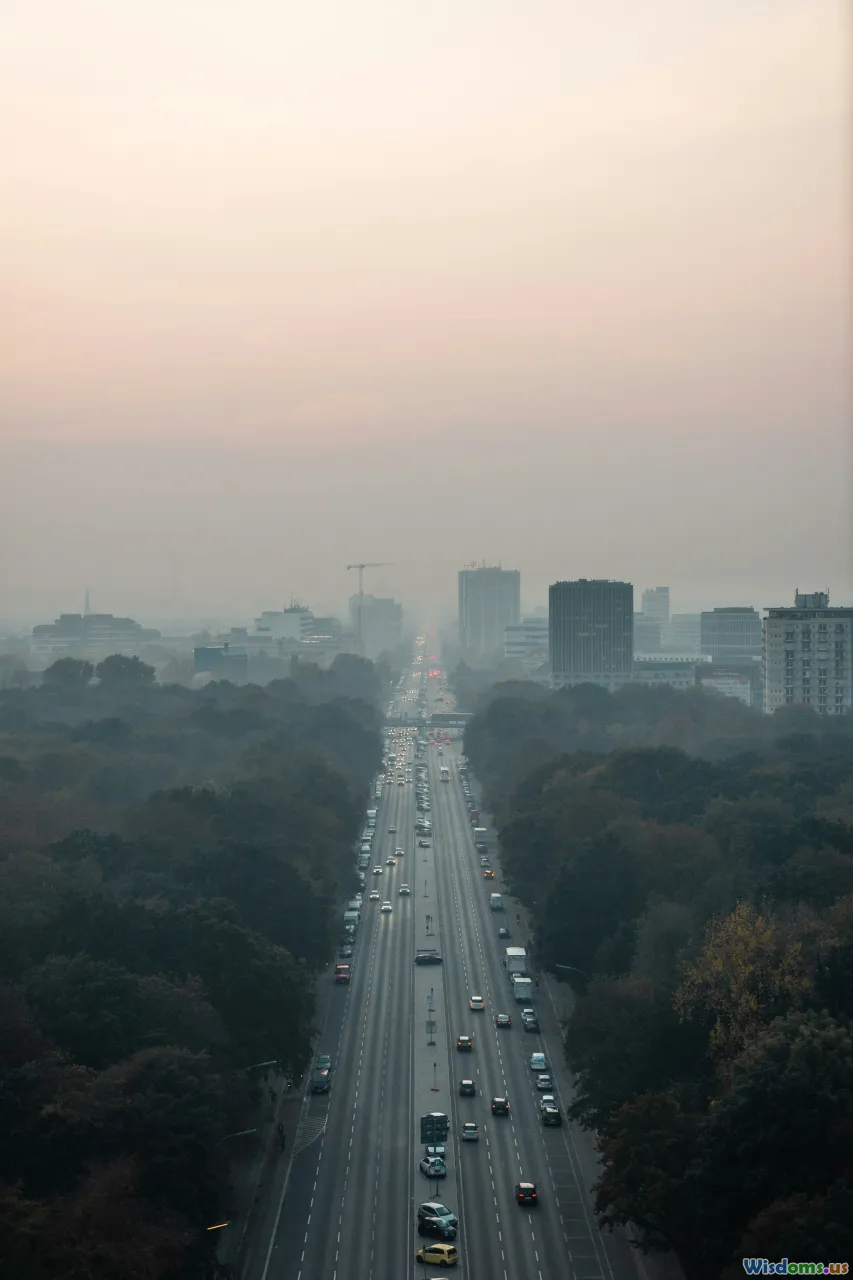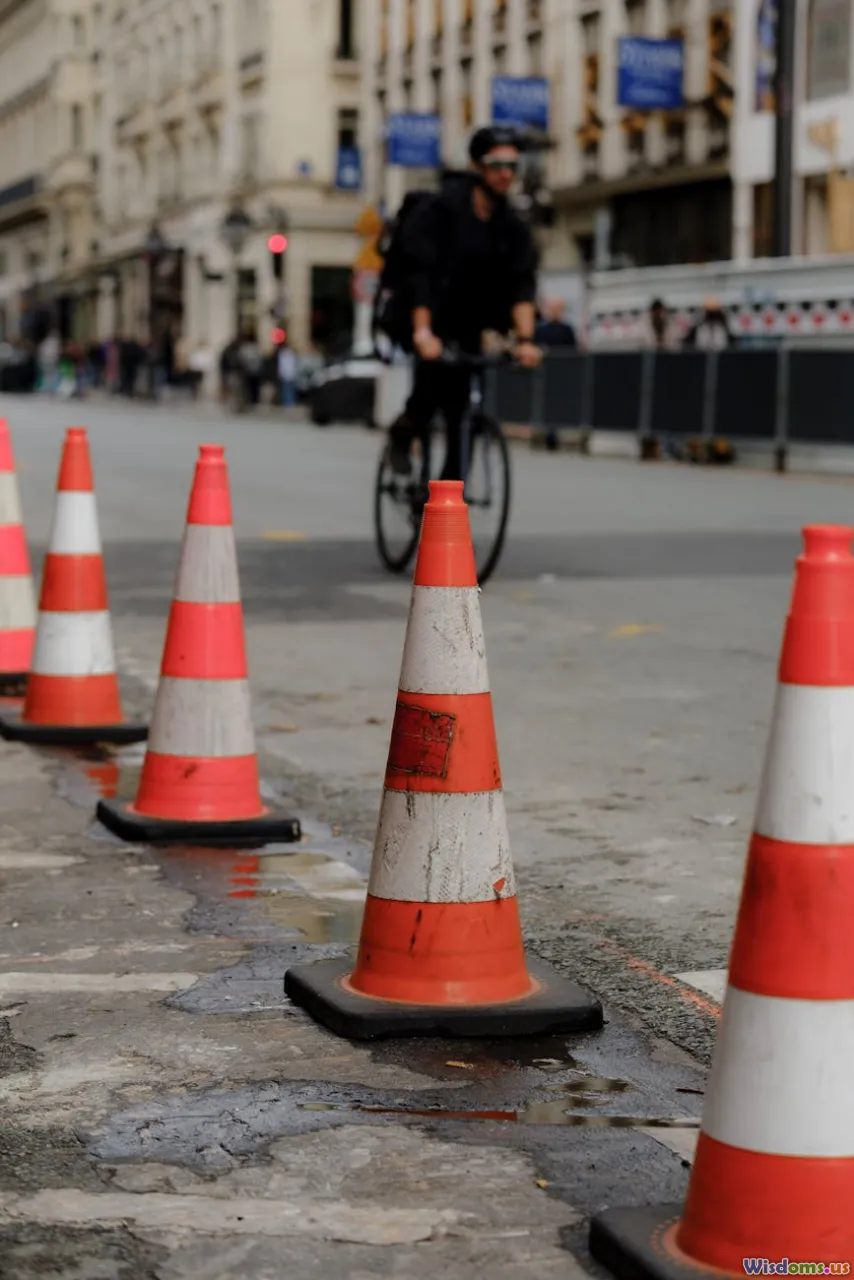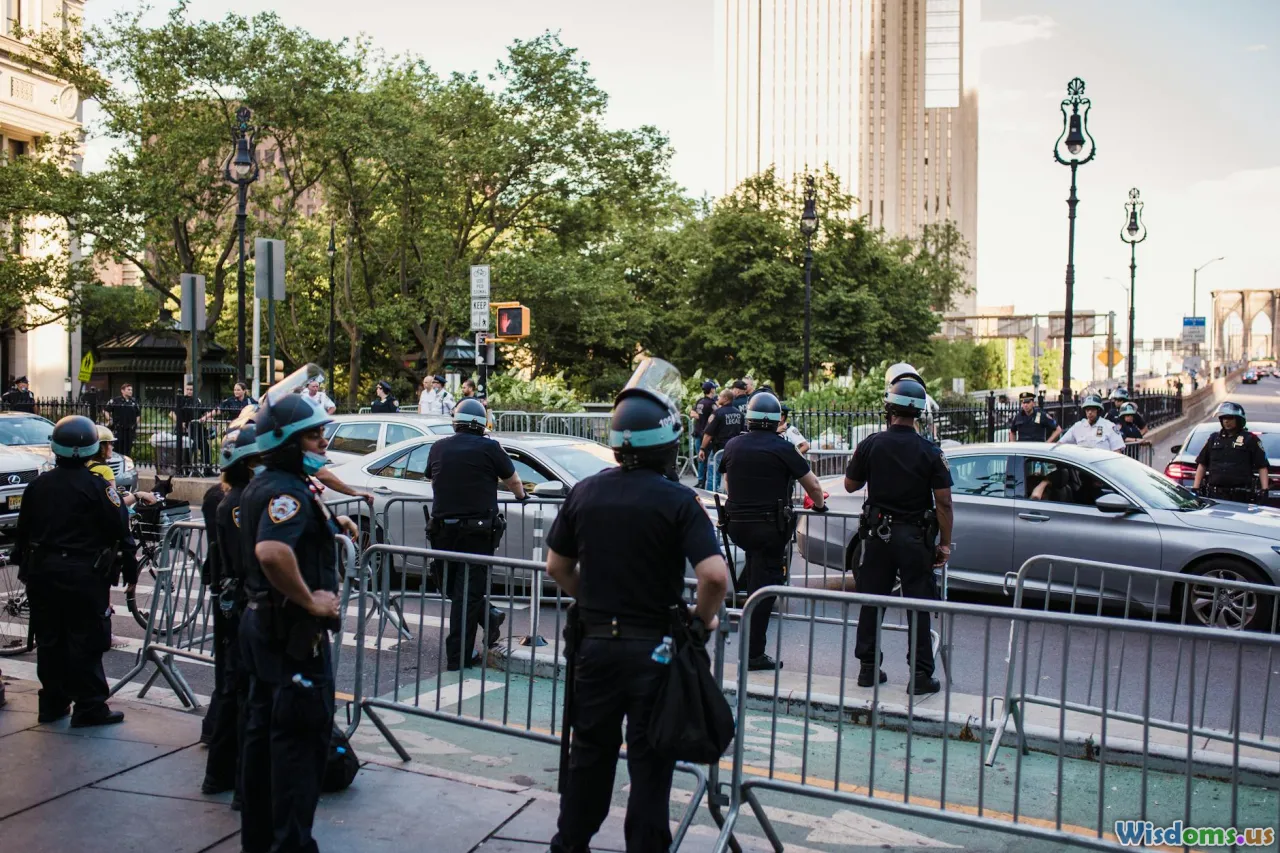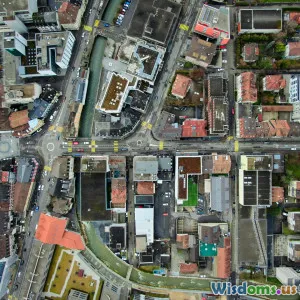
Can Car Free Zones Solve Urban Pollution Problems
16 min read Explores the effectiveness of car free zones in reducing urban air pollution and improving city environments. (0 Reviews)
Can Car Free Zones Solve Urban Pollution Problems?
Cities across the globe are grappling with the ever-growing threat of urban pollution, a silent menace that not only curtails the quality of urban life but also has grave implications for public health and the planet’s future. In this landscape, the concept of car-free zones emerges as a promising antidote—a tool to untangle urban streets from choking traffic and omnipresent smog. But are car-free zones the silver bullet for urban pollution? Are they an adaptable solution for every city striving for cleaner air and healthier residents? Let’s journey through the realities, challenges, and opportunities presented by urban car-free zones, supported by data, real-world examples, and actionable strategies for city leaders and residents.
The Crux of Urban Pollution: Why Focus on Cars?

Automobile emissions contribute significantly to urban air pollution. According to the World Health Organization, urban air pollution claims approximately 4.2 million lives globally annually, primarily due to respiratory and cardiovascular diseases. With traffic in major cities responsible for a substantial share of dangerous particulate matter (PM2.5) and nitrogen oxides (NOx), targeted interventions in transportation have the potential for massive impact.
The Ubiquity of Vehicles in Urban Spaces
Many city centers are built around automobile use, leaving limited space for pedestrians or cyclists. Traffic congestion isn’t just an inconvenience—it directly correlates with peak emission times. For example, Congestion data from Los Angeles reveals that during rush hours, car speeds may drop below 15 mph, dramatically increasing exhaust output due to inefficient engine performance.
- Fact: The European Union attributes up to 30% of urban area fine particulate matter (PM) pollution to road transport.
This baseline reality makes cars a logical—and impactful—target for pollution reduction.
Understanding Car-Free Zones: Models and Approaches

Car-free zones are designated urban areas where private vehicles are restricted, giving priority to foot and bicycle traffic, public transport, and, at times, limited emergency or delivery vehicles. The design and enforcement methods vary widely, from permanent bans in city cores to temporal restrictions during weekends or events.
Key Models in Practice:
- Partial Closures: Some cities, such as Paris, restrict cars along the Seine on weekends, turning major arteries into promenades.
- Full Pedestrianization: Venice stands as a longstanding model, where the narrow alleys and canals inherently foster a pedestrian-first environment.
- Timed Restrictions: Stockholm’s congestion taxes effectively deter car entry into central zones during peak hours.
By limiting or eliminating cars, these zones seek to reclaim public space, encourage cleaner commuting, and mitigate the sources of pollution at their heart.
Success Stories: Where Car-Free Zones Made the Difference

Evidence from global urban experiments demonstrates that car-free zones can sharply cut local air pollution and enhance public health.
Copenhagen, Denmark
Copenhagen’s Strøget, one of Europe’s longest pedestrianized streets, has become a thriving commercial center since its car ban in 1962. Not only did air pollution levels reduce, but businesses reported increased foot traffic and sales, showing strong economic cobenefits.
Madrid, Spain
Madrid Central, the city’s low-emission zone, saw traffic plummet by more than 30%, with nitrogen dioxide levels dropping 32% in the heart of the Spanish capital within a year of implementation. These improvements were achieved alongside increased public transport use and noticeable increases in cycling and walking.
Bogotá, Colombia
The Colombian capital’s legendary “Ciclovía” event closes over 120 kilometers of city roads to vehicles every Sunday and public holiday, welcoming more than 1.5 million participants to bike, run, and socialize in street spaces. An air quality study by Universidad de Los Andes found PM10 concentrations dropped by 13% on Ciclovía days.
These success stories highlight the potential for wide-ranging change, framed by tailored local contexts and ongoing policy innovation.
Environmental, Social, and Economic Impacts

The benefits of car-free zones ripple far beyond pollution control, influencing core aspects of urban environments.
Air Quality Improvements
Reduced vehicle numbers offer almost immediate reductions in nitrogen dioxide and particulate levels. A study published in Nature Communications (2022) estimates that "superblocks" in Barcelona could prevent 667 premature deaths annually if their model was expanded citywide.
Social and Mental Wellbeing
By prioritizing walkability and communal spaces, car-free cores often see less noise, lower stress levels, and more community activity. Public spaces converted from traffic corridors (e.g., Times Square in New York) quickly become social hubs where people relax, interact, and feel safer.
Economic Resilience
Pedestrian-friendly initiatives dispel fears that banning cars will kill commerce. In fact, research from Transport for London (2018) indicates that people walking, cycling, or using public transport spend up to 40% more in local shops than those who drive. Cities from Oslo to Melbourne have documented boosts in both retail vitality and tourism linked to vibrant, clean, walkable districts.
Design, Implementation, and Enforcement: Turning Vision Into Reality

Making car-free zones work requires more than announcing bans; it demands meticulous design, vigilant enforcement, and inclusive engagement with stakeholders.
Keys to Successful Transition
- Comprehensive Urban Planning: The layout should prioritize accessibility for all. Resilient streetscapes should accommodate delivery needs and special circumstances (e.g., disability access).
- Effective Communication: Public information campaigns (digital, on-the-ground ambassadors) alert residents and businesses to changes, reducing confusion.
- Incentivizing Alternatives: Investment in reliable and affordable public transport, bike-sharing systems, and last-mile logistics is vital for mode-shift success.
- Enforce With Technology: Modern license plate recognition (LPR) and smart bollards automatically identify and limit unauthorized vehicles, saving on police resources. London’s Ultra Low Emission Zone (ULEZ) is a leading example, with cameras enforcing restrictions and pollution-charging drivers in real time.
In Barcelona, the "superblock" model groups grids of city blocks, closing internal streets to through-traffic while maintaining access for residents and emergency vehicles. Installations of benches, trees, and playgrounds reinforce the sense of safe, vibrant place.
Common Challenges: What Could Go Wrong?

While car-free initiatives can spark transformation, they aren’t immune to pitfalls.
1. Traffic Displacement ("Boundary Effect")
Eliminating cars from one area can worsen congestion and pollution on peripheral roads, risking a mere geographic shift of the problem. London’s Congestion Charge Zone initially faced backlash from neighborhoods outside the buffer due to redirected commuter traffic and parking challenges.
Mitigation: Success depends on simultaneous improvements in public transit, disincentives for outside car use, and coordinated neighborhood planning.
2. Resistance from Stakeholders
Local businesses sometimes fear short-term losses or reduced accessibility. Residents might resent perceived inconvenience, particularly where alternative transport options are poor or cultural attitudes towards car ownership are deeply rooted.
Solution: Early engagement, subsidies for small businesses, and proof of long-term benefits (increased footfall, cleaner air) help earn buy-in.
3. Enforcement Difficulties
Without consistent monitoring, delivery vehicles, taxis, or “VIP” drivers may disregard rules, undercutting the intent and efficacy of restrictions.
Remedy: Smart city surveillance and robust penalties are key components of robust enforcement, minimizing leaks in car-free policies.
Comparing Global Approaches: One Size Doesn’t Fit All

The most effective car-free zones are tailored to the unique rhythm of each city—there’s no universal formula.
| City | Model | Distinctive Feature | Key Lesson |
|---|---|---|---|
| Oslo | City center pedestrian | Phased removal of city parking | Gradual introduction aids adaptation |
| Barcelona | Superblock | No through-traffic in grouped blocks | Social and ecological benefits scale quickly |
| Paris | Temporary closures | High-visibility "Paris Respire" events | Weekend restrictions build momentum |
| Singapore | Electronic Road Pricing (ERP) | Real-time congestion charges | Pricing mechanisms can complement bans |
Urban density, climate, transportation alternatives, and local political culture all shape what’s possible.
Actionable Advice for City Leaders and Communities

Given the complexity of introducing car-free areas, a stepwise, transparent approach maximizes return and equity. Here’s a practical framework for urban stakeholders:
1. Start Small and Iterative:
- Launch pilot projects in select districts or at limited times (e.g., weekends).
- Use "pop-up" parklets or temporary street closures as reality tests.
2. Foster Broad Coalitions:
- Engage with residents, shop owners, disability advocates, and transport agencies from day one.
- Organize town halls, participatory design workshops, and online feedback campaigns.
3. Measure, Monitor, and Adapt:
- Set clear, evidence-based goals for air quality and traffic reduction.
- Leverage real-time air sensors, traffic counters, and resident surveys for rapid feedback.
- Be ready to tweak rules, transit schedules, and logistics dynamically.
4. Prioritize Mobility Equity:
- Ensure low-income neighborhoods and marginalized groups have equal access to the transport benefits.
- Subsidize fares or improve transit links as needed.
5. Build Lasting Public Trust:
- Communicate transparently about short-term disruptions and long-term advantages.
- Celebrate early wins (pop-up green markets, street festivals, positive media coverage).
The Road Ahead: Linking Clean Air to Holistic Urban Health

Car-free zones, when thoughtfully implemented, prove they can be a cornerstone in the battle against urban air pollution and in remaking cities for people, not just machines. The journey is complex and context-dependent, demanding layered solutions—expanding public transit, bolstering active mobility, fostering social inclusivity, and reimagining public space. Yet, every city that has tried—even at small scale—unveils a future with cleaner air, healthier children, more sociable streets, and a reinvigorated sense of place.
The ultimate value of car-free zones lies not solely in emission statistics, but in forging urban environments where health, connection, and creativity can thrive. Whether you’re a policymaker, business owner, or city-dweller, supporting car-free initiatives is not just about subtraction (removing cars); it’s about addition—adding vibrancy, community, and resilience to urban life.
Rate the Post
User Reviews
Popular Posts



















